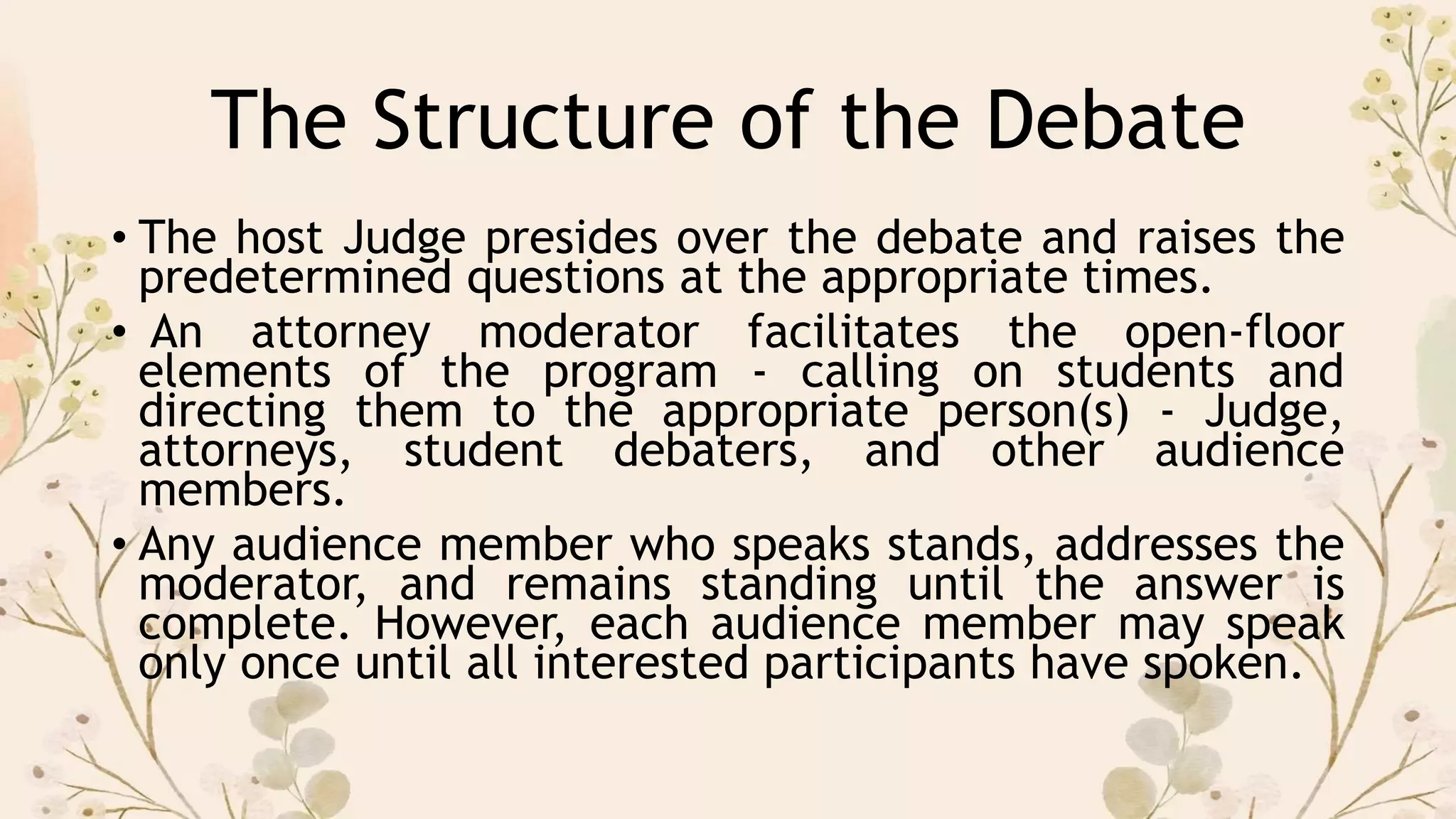The document outlines the structure and rules of an Oxford-style debate, including the roles of host judges, attorney moderators, and audience jurors. Each team consists of three debaters who prepare arguments for either the affirmative or negative position on a predetermined question. Audience participation is key, with jurors evaluating arguments and possibly discussing their verdict at the end, while the judge facilitates the proceedings without declaring a winner.









